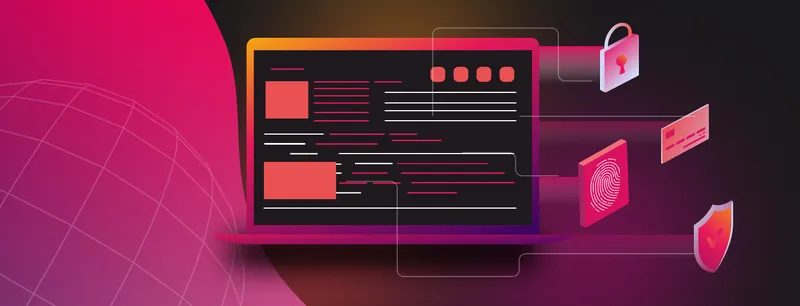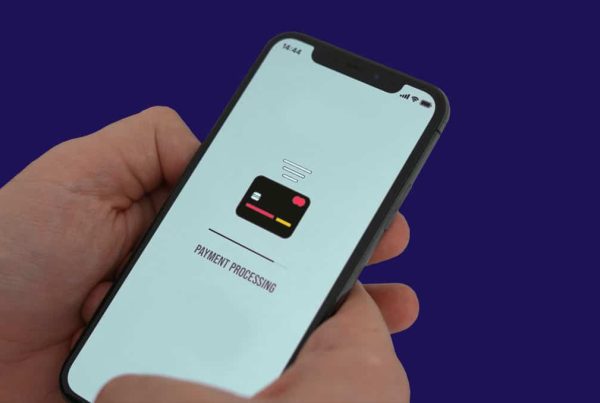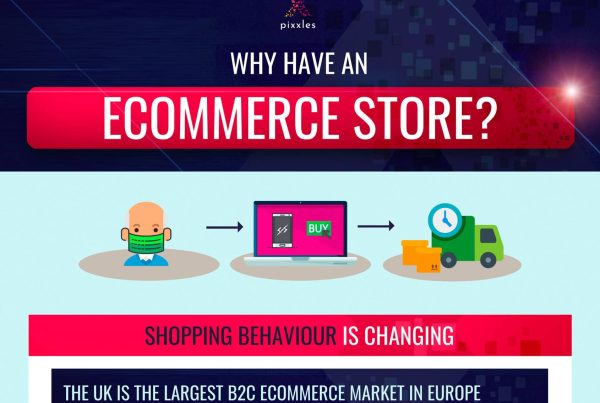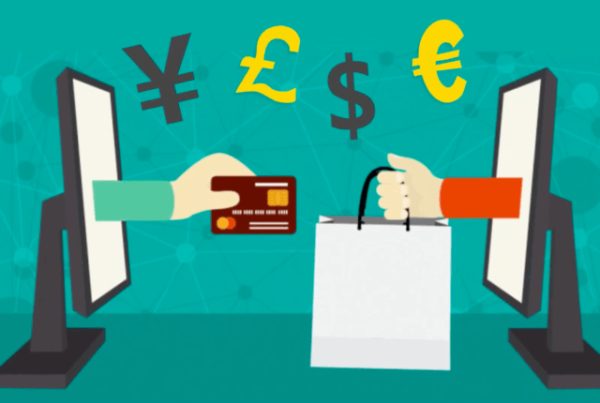Summary
This is an overview of online payments, the history of early payment systems, why online payments are so popular today, and common payment terms.
History of online payments overview
In today’s fast-paced digital world, online payments have become an integral part of our daily lives.
But have you ever wondered how online payments came into existence and changed over time?
This article provides a brief overview of the history of online payments. It also provides definitions for common payment terms that every online business owner should know.
To skip the opening definitions, jump to the traditional payments section. (Jump-To section start)
Online payment defined: What exactly is an online payment?
An online payment is a financial transaction that occurs over the internet.
From a technical perspective, any online payment is a series of secure data exchanges that involve communication protocols between multiple entities. These entities include the payer, the payee, and their respective financial institutions.
How the payment process starts is, of course, fairly straightforward—a payer provides their payment information to the payee. What happens next gets more complicated.
To learn more about how online payments work, see our short guide about banks and payment processors.
What are traditional payments vs. e-payment systems?
Traditional payments are made with cash, checks, and letters of credit.
E-payments, meanwhile, are digital in nature and can be made through credit/debit cards, mobile wallets, and virtual terminals.
Why are online payments increasing so rapidly?
Digital payments are growing because they offer benefits like security (reduced risk of theft), traceability, transparency, convenience, and speed.
Convenience and speed are especially important here. After all, it’s hard to beat the ability to shop from anywhere at any time.
» MORE: 9 crucial facts to remember when accepting NCF mobile payments
Traditional payments like cash and cheque are incredibly slow (Jump-To section end. Jump here)
Traditional cash and cheque payments have always been slow, at least compared to online payments.
Cash transactions, while extremely useful in face-to-face transactions, are limited by geographical constraints and the need for both parties to be physically present.
Historically, once cheque payments became popular (in the late 1800s), they added another layer of complexity and delay, as they required manual processing and clearing through banks.
Even today, cheque clearing can sometimes take several days or even weeks, depending on the banks and countries involved.
By contrast, online payments can be processed in real-time or within minutes.
Consumer behavior has changed dramatically
The expectation of convenience and speed has certainly changed consumer behavior. Consumers now expect seamless, fast, and secure payment options, which has driven businesses to integrate online payment methods into their operations.
In other words, accepting online payments is a must for businesses to succeed today. Competition has and continues to fuel the increase of digital payments.
Check out this impressive UK stat about smartphone use for online payments by 2025 for an example of what we mean.
Technology is making it easy to accept payments online
Online payments are also rapidly becoming dominant due to mobile point of sale (mPOS) systems.
This technology and others like it make it even easier for businesses to integrate online payment systems into their operations.
Given how far online payment technologies have come, it’s amazing when you look back and realize that the technology is not very old.
The roots of modern online payments
Believe it or not, the first-ever electronic money transfer occurred in 1871.
This innovation marked a significant milestone in the history of financial transactions and laid the foundation for the development of modern money transfer services.
How Western Union’s money transfer service worked
Western Union’s money transfer service leveraged its existing telegraph network to transmit money across vast distances.
To initiate a transfer, a customer would visit a local Western Union office, provide the necessary information about the recipient, and deposit the funds to be sent.
The sending office would then transmit the transaction details and a unique code via telegraph to the receiving office.
A similar concept is still employed today by banks and payment processors, although with much more complexity.
Pre-internet innovations in the payments industry, plus payment gateways
Did you know the first credit card terminal was only introduced in 1979?
This was a historic year that marked a profound shift in the payment landscape. And from this point forward, only in a few short years, electronic payment platforms rapidly gained traction in retail.
To accommodate the change, a huge network of telecommunication relays was needed, which worked to process electronic payments around the world until the internet arrived.
The internet arrives…
The credit card terminal was a significant invention. But the arrival of the internet was an unprecedented event that forced companies to completely rethink their approach to payments.
For one, once businesses started going online, the demand for virtual payment terminals led to the development of payment gateways.
For two, the internet spurred the growth of numerous payment service providers (PSPs) and payment processors, creating a competitive landscape conducive to innovation.
The rate of payment innovation today is much faster than it was 50 years ago.
» MORE: The difference between a bank and a payment processor
The early online payment system
Interesting Fact: The first financial institution in North America to offer online banking for all its customers was Stanford Federal Credit Union.
Other financial corporations quickly followed suit.
The 1990s were the days
Among the early online payment systems were those listed below.
While not all of these payment systems survived, they paved the way for the future by facilitating online transactions.
- Stanford Federal Credit Union: In 1994, Stanford FCU became the first financial institution in North America to offer online banking.
- First Virtual: Launched in 1994, First Virtual was an early internet payment system that allowed customers to make purchases online using their email address and an ID number.
- CyberCash: Also started in 1994, CyberCash attempted to create a secure online payment infrastructure so that customers could make real-time payments using credit cards.
- PayPal: Started in 1998 as Confinity, PayPal changed the online payment world by offering users a secure and efficient way to send and receive money online.
- E-gold: Launched in 1996, E-gold was one of the earliest digital currencies. It allowed users to own and transfer gold electronically. E-gold was no doubt a predecessor of cryptocurrencies like Bitcoin.
PayPal’s digital payments change everything
We’ve come a long way since the days of E-gold and First Virtual, thanks in part to PayPal’s entrance into the industry. PayPal’s entry was special, as it solved certain key problems.
One of the main concerns for both consumers and merchants in the early days of e-commerce was the security of online transactions.
PayPal addressed this issue by implementing robust security measures, such as data encryption, fraud detection systems, and buyer and seller protection policies.
Another area of concern was reach. PayPal’s international payment capabilities allowed users to conduct transactions across borders, making it easier for merchants to make transactions worldwide.
Asia adopts online payments
With the rise of e-commerce, Asian markets witnessed the emergence of online payment gateways and platforms. This development has had huge and ongoing global impacts because of Asia’s high population concentrations.
The mid-2000s
By the mid-2000s, Mobile payments began to gain traction in Asia, particularly in Japan and South Korea, with the advent of mobile wallets and contactless payment technologies.
For instance, Japan’s NTT DoCoMo introduced its “Mobile Wallet” service in 2004, which allowed users to make contactless payments via their mobile phones.
The late 2000s
In the late 2000s, e-commerce platforms like Alibaba and Flipkart really hit stride as more people started making payments online.
The growth of these platforms led to localized payment solutions, such as Alipay in China and Paytm in India, both of which have greatly facilitated the adoption of online payments.
Early to mid-2010s
In the early to mid-2010s, the rise of smartphones spurred the growth of mobile payment apps and digital wallets across Asia.
Companies like Tencent (WeChat Pay) in China and LINE Pay in Japan capitalized on the trend by integrating payment features into their popular messaging apps.
Today
At present, countries like India and Indonesia have introduced their own initiatives to promote the adoption of digital payments.
Two examples are the Unified Payments Interface (India) and Gojek (Indonesia).
What are the 4 types of electronic payment systems?
There are more than four electronic payment system types.
Here’s a list:
- Debit card
- Credit card
- Digital wallet (e.g., PayPal, Apple Pay, Google Pay)
- Online banking (e.g., ACH transfers, wire transfers)
- Virtual terminal
- Mobile payment apps (e.g., Venmo, Zelle)
- Cryptocurrencies (e.g., Bitcoin, Ethereum)
What was the first e-commerce transaction?
The first documented e-commerce transaction took place in 1994 when a customer used a credit card to purchase a Sting solo album from NetMarket.
Common payment terms
- ACH (Automated Clearing House) – ACH is an electronic network for processing financial transactions between banks and financial institutions.
- Acquirer (or Acquiring bank) – An acquirer is a financial institution that processes card payments for a merchant.
- Card Networks (or card schemes) – Card networks are organizations, such as Visa and Mastercard, that facilitate electronic fund transfers between banks and merchants for credit and debit card transactions.
- Chargeback – A chargeback is a reversal of a credit card transaction, typically initiated by a cardholder’s bank due to a dispute or fraudulent activity.
- Digital Wallet – A digital wallet is an electronic application that allows users to make online transactions by storing their payment information.
- E-commerce – E-commerce refers to the buying and selling of goods and services over the internet.
- Fraud (fraudulent payment) – Fraudulent payments are unauthorized transactions made using stolen or compromised payment information, often resulting in financial loss for the merchant.
- Fraud Prevention – Fraud prevention involves implementing measures and systems to detect, mitigate, and prevent fraudulent transactions in the payments ecosystem.
- Interchange Fees – Interchange fees are charges paid by a merchant’s bank to a cardholder’s bank for processing credit and debit card transactions.
- Issuer (or Issuing bank) – An issuer is a financial institution that provides credit and debit cards to consumers on behalf of card networks.
- KYC (Know Your Customer) – KYC is the process of verifying a customer’s identity to prevent fraud and comply with regulatory requirements.
- Local Payment Methods (or alternative payment methods) – Local payment methods are region-specific payment options that cater to the preferences and needs of consumers in a specific location.
- Merchant Account – A merchant account is a specialized bank account that enables businesses to accept and process electronic payments, such as credit and debit cards.
- NFC (Near Field Communication) – NFC is a wireless communication technology that allows devices to exchange data over short distances, enabling contactless payments via smartphones and other devices.
- PCI DSS (Payment Card Industry Data Security Standard) – PCI DSS is designed to protect cardholder data and ensure the secure processing, storage, and transmission of payment information.
- PCI compliance – PCI compliance refers to a merchant’s adherence to the Payment Card Industry Data Security Standard (PCI DSS) guidelines to protect customer payment information.
- Point of Sale (POS) – A point of sale (POS) system is the hardware and software used by merchants to process and manage transactions at the time and place where a sale occurs.
- Payment Gateway – A payment gateway is a service that securely transmits payment information between a customer’s bank, the merchant’s bank, and the payment processor.
- Payment Service Provider (PSP) – A payment service provider (PSP) is a company that offers a comprehensive suite of payment processing services, including payment gateways, merchant accounts, and fraud prevention tools.
- Virtual Terminal – A virtual terminal is a web-based application that allows merchants to process credit and debit card transactions manually, typically by entering the customer’s payment information into a secure online form.








